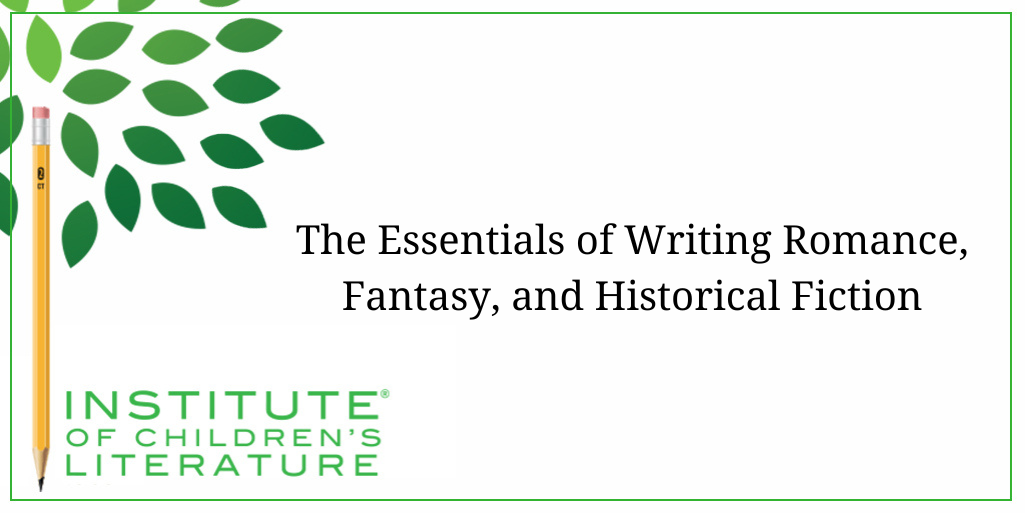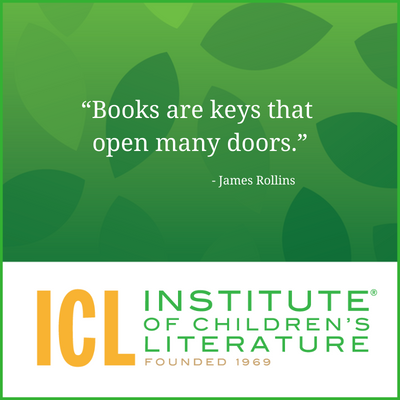
5 Ways Writers Can Prep for 2025 Goal Setting
Before we roll on to the new writing year, let’s harness our optimism for the blank slate before us and prepare for our 2025 Goal Setting just for writers.

Understanding the defining elements in the most popular genres make it easier to describe your work in progress to friends, agents, and publishers. It also allows you to see where you’ve mixed more than one genre and whether you’ve done it effectively. Last week we looked at elements of mystery and adventure stories. So let’s press on and consider the essentials of writing romance, fantasy, contemporary realistic fiction, and historical fiction.
For young adult novels, romance is often thrown into the genre mix, even when the novel isn’t categorized or shelved as a romance. Some authors are pushing back against pressure from agents and publishers to add romance elements to novels that fit clearly into a different genre, but it is still easier to sell a young adult novel if it has a romantic subplot. So, let’s look at what the elements of the romance genre are.

One of the key elements in any romance is the sense that the growing relationship is irresistible. A story where two characters are mildly attracted to one another but easily shove the attraction aside to focus on the real meat of the story is not a romance. In a romance, there is strong emotional tension connected to this relationship that manifests whenever the two characters are together. They unsettle one another but they also interest one another. In a romance novel, these feelings are never one-sided. So, a novel where a character has a crush on another character who is completely oblivious and uninterested is not a romance, even if the character with the crush does a lot of wistful moping.
In a classic romance, the story has a “happily ever after” where the two characters end up together and the reader feels sure that the relationship will work. This is one element that is not required for young adult novels that have romance subplots/elements. In a YA romance, after the two characters fall madly in love, one of them may die or have to step through a portal into another universe or some other catastrophic thing that means no happily ever after.
Romantic moments in a young adult novel tend to be handled differently depending on (1) the reader’s age and (2) the general edgy nature of the book. For young teens, there is no sex on the page (even though the story may imply more happened after the story skipped to the next scene). For older teens, the amount of sex on the page tends to depend upon the preference of the writer and whether it fits with the tone and approach of the rest of the book. A novel with lots of other bold, realistically handled elements may handle sexual encounters the same way. Still, the more explicit the sex on the page, the more hesitant some agents and publishers may be to consider it, so that’s another element to consider.
Obviously, middle grade novels and books for younger children tend to be light on romance (unless it’s a fairy tale type of story where the romance elements are handled with a light touch and little to no physicality.) Love stories are few and far between and sweet rather than realistic.
One of the key elements of fantasy is magic. In a fantasy story, things happen that could not happen in real life and they happen for reasons outside of technological innovation (though they may be complex technology invented to help with the harnessing of magical powers.) The magic in a fantasy novel may be huge and change everything about society or it may be something as simple as a kid who somehow learns he can fly. It must be essential to the plot and not simply feel “tacked on,” nor should it pop up suddenly simply to fix a plot problem.
The magic in a fantasy novel needs to be well thought out. You may not explain everything about it on the page, but you (as the author) need to know it. The bigger the magic required in the novel, the more time and thought need to be given to the magical system because the internal logic of the book needs to work. For instance, if your character discovers she can start fires then any time a plot problem could be solved if your main character starts a fire, then it should be solved that way. If not, you need to build a reason into your magical system that explains why.
For instance, maybe she can only start fires during the day because this ability is dependent on her tapping into energy from the sun. Or maybe there is some element that blocks her ability, like being surrounded by water. Or maybe she can start the fire, but it’s pouring rain so she can’t keep it going. In other words, everything in a fantasy novel needs to make sense, even though it depends upon fantastic abilities or situations. Additionally magic must not eliminate struggle, so the characters’ magical ability must not be so vast that problems are (or could be) solved with no struggle or challenge.
For younger children, fantasy novels tend to be simple things with simple “rules.” For instance, animals that can talk and do people things are common in picture books and early readers. But if animals can talk and do people things, you will need to decide if you can have human characters in this world. You will need to decide if your animal characters can have animal pets.
Both of these choices push the logic of the basic story premise and the more you make that kind of choice, the more difficult it will be to make a story that will appeal to an agent or editor. It’s not impossible. If your characters are appealing enough and your story is engaging enough and you’re skilled enough, you can overcome most any publishing resistance, but be aware that such choices can make things more difficult.
If a novel is contemporary and realistic, it presents the characters in a setting that mirrors the real world and society that exists today. You don’t necessarily have to have the same president or drop common real-life celebrity names or brand names, but the overall feel of the book will be realistic. The idea is that this situation and characters could actually exist somewhere if you could only find them.
Most of the time the plots of contemporary, realistic novels for young people focus on growth and change (but then, that is an element of most plots, isn’t it?). Characters deal with problems growing out of relationships with family, friends, and members of the community. The one “realistic” element that is often stretched in unrealistic ways in contemporary, realistic stories for young people is independence. Parents are less present and determine less of the character’s day-to-day decisions in these novels than they do in the real world. The character’s free time may be a little unrealistically free and long. The character’s freedom to travel in his community may be a bit too great to be totally believable, but such stretches are necessary if a character is going to have any chance to solve his own problems, which is necessary for any successful story for young people.
Contemporary, realistic novels can also deal with the systemic problems in our society and the groups that are affected by them. Especially in teen novels, stories where the character feels restrained by the demands of society are common and characters tend to resist these restraints in order to find their own place.
The last of the genre specifics we’ll be looking at involve the historical fiction genre. The defining element of this genre is right in the title, the book will be set at some point in the past. Historical stories can be set in the distant past (or even the ancient past) or they can merely be set in a past before the birth of the reader age for the novel (though many writers, publishers, and critics define the historical fiction genre as having settings fifty years in the past or longer.
Historical fiction always involves considerable research because the “history” of the story needs to be accurate unless the author is making a deliberate choice to write about a past that isn’t quite real. Even then, the book should have as many true-to-life historical elements as possible. The appeal of historical fiction for many readers and parents is the way it takes us into a time we’ve never experienced, so historical accuracy can be important to that appeal.
When history is violated in order to make for a more interesting and exciting book, the story is often classified as alternate history. For example, in The Wollstonecraft Detective Agency books, author Jordan Stratford imagines what it might have been like if Ada Lovelace and Mary Shelley had known one another as young girls and formed a detective agency. This kind of mixing of history with such unlikely elements as found in the novels results in a book that is a mix of historical and speculative fiction (the broad genre category that includes fantasy, science fiction, magical realism, etc.)
Mixing genres is quite common in historical novels for young people so you end up with novels like the Wollstonecraft Detective Agency books that mix historical fiction with speculative fiction and mystery and adventure. That can be quite a lot to balance, but when you know what makes up each genre, the choices you make in the mix can feel purposeful and perfect for the resulting book.
Now, as you think about the elements of different popular genres for young people, how would you describe your work in progress? If you aren’t working on anything right now, imagine any two or even three of the genres we’ve looked at. What would a historical mystery adventure series look like? (It might look a lot like the Wollstonecraft Detective Agency books.) What would a contemporary fantasy romance look like and what age group would be most interested in it?
By considering different genres, you open both a world of possibilities and some great leaping-off points for inspiration as well. As with any good recipe, mixing different ingredients can result in something that tastes fresh and unique. It’s all in how you do it.
With over 100 books in publication, Jan Fields writes both chapter books for children and mystery novels for adults. She’s also known for a variety of experiences teaching writing, from one session SCBWI events to lengthier Highlights Foundation workshops to these blog posts for the Institute of Children’s Literature. As a former ICL instructor, Jan enjoys equipping writers for success in whatever way she can.

Before we roll on to the new writing year, let’s harness our optimism for the blank slate before us and prepare for our 2025 Goal Setting just for writers.

Writers can be thin-skinned when it comes to getting feedback on their work. Let’s look at 4 ways to positively deal with constructive criticism!

Rejection is part of the territory when it comes to being a writer. Today we offer reflection for writers to help redirect your efforts after a rejection.
1000 N. West Street #1200, Wilmington, DE 19801
© 2024 Direct Learning Systems, Inc. All rights reserved.
1000 N. West Street #1200, Wilmington, DE 19801
© 2024 Direct Learning Systems, Inc. All rights reserved.
1000 N. West Street #1200, Wilmington, DE 19801
© 2024 Direct Learning Systems, Inc. All rights reserved.
1000 N. West Street #1200, Wilmington, DE 19801
© 2025 Direct Learning Systems, Inc. All rights reserved.
1000 N. West Street #1200, Wilmington, DE 19801
©2025 Direct Learning Systems, Inc. All rights reserved. Privacy Policy.
5 Comments